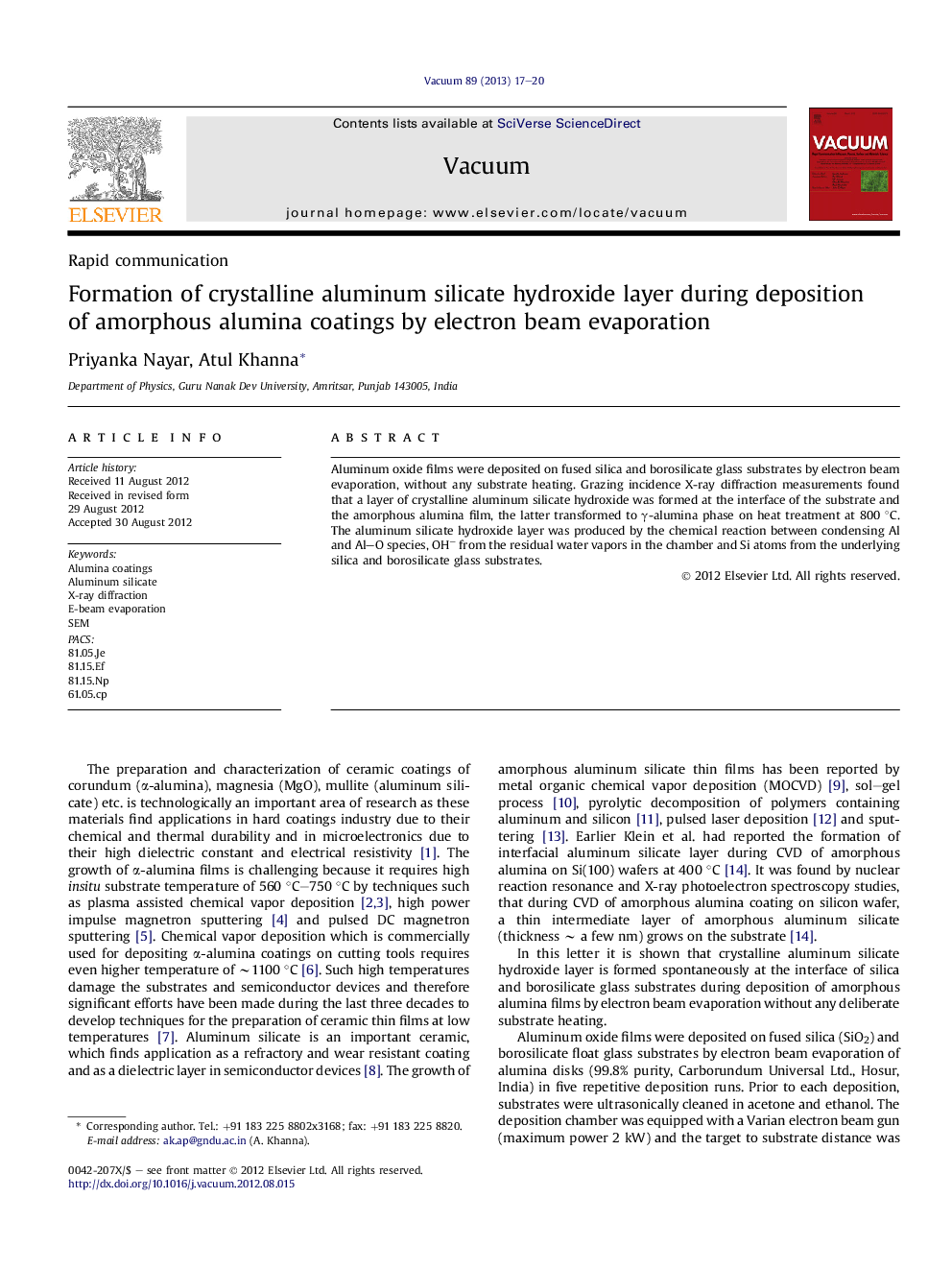| کد مقاله | کد نشریه | سال انتشار | مقاله انگلیسی | نسخه تمام متن |
|---|---|---|---|---|
| 1690343 | 1518980 | 2013 | 4 صفحه PDF | دانلود رایگان |

Aluminum oxide films were deposited on fused silica and borosilicate glass substrates by electron beam evaporation, without any substrate heating. Grazing incidence X-ray diffraction measurements found that a layer of crystalline aluminum silicate hydroxide was formed at the interface of the substrate and the amorphous alumina film, the latter transformed to γ-alumina phase on heat treatment at 800 °C. The aluminum silicate hydroxide layer was produced by the chemical reaction between condensing Al and Al–O species, OH− from the residual water vapors in the chamber and Si atoms from the underlying silica and borosilicate glass substrates.
► Growth of interfacial aluminum silicate hydroxide layer during deposition of alumina coatings.
► Silicate layer forms due to reaction between Al–O species and Si atoms in the glass substrates.
► Top layer is amorphous alumina that crystallizes into gamma phase on annealing at 800 °C.
► Feasibility of growth of mullite layers without high temperature substrate heating.
Journal: Vacuum - Volume 89, March 2013, Pages 17–20